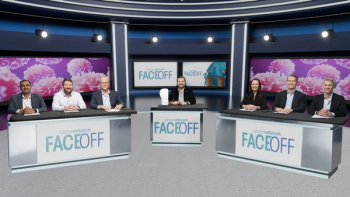
ASCO 2025: MonumenTAL-1 Extended Follow-Up for Talquetamab in R/R MM
Panelists discuss how talquetamab targets GPRC5D, which is heavily expressed on malignant plasma cells but not normal B cells, potentially explaining lower infection rates compared with B-cell maturation antigen (BCMA)–targeted therapies.
Episodes in this series

GPRC5D (G protein–coupled receptor family C group 5 member D) represents a novel therapeutic target in multiple myeloma treatment. This receptor is heavily expressed on malignant plasma cells compared with normal plasma cells and shows minimal expression on normal B cells, distinguishing it from BCMA targets. The expression pattern of GPRC5D also includes epithelial cells in hair, skin, nails, and tongue papillae, which explains some of the unique adverse effects associated with talquetamab therapy.
The MonumenTAL-1 study was a pivotal phase 1/2 trial that led to talquetamab’s approval, enrolling 339 patients across 3 distinct cohorts. The study design included T-cell redirecting therapy-naive patients (allowed prior BCMA antibody-drug conjugate exposure) and a separate cohort of patients with prior T-cell–directed therapy exposure. Two dosing regimens were evaluated: 0.4 mg/kg weekly subcutaneously and 0.8 mg/kg every other week subcutaneously, with the primary end point being overall response rate and secondary end points including survival and response durability.
The study’s comprehensive design allowed for evaluation of talquetamab’s efficacy across different patient populations, including those who had received previous T-cell redirecting therapies. This approach was particularly important given the evolving treatment landscape where CAR T and other bispecific therapies are being moved to earlier treatment lines, creating a need to understand how subsequent therapies perform in previously treated patients.
Newsletter
Stay up to date on recent advances in the multidisciplinary approach to cancer.




















































































